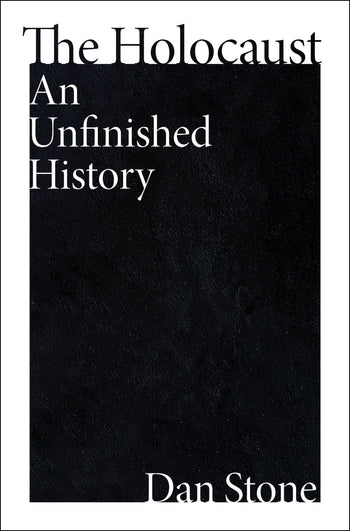The Holocaust: An Unfinished History
- By Dan Stone
- Mariner Books
- 464 pp.
- Reviewed by Andrew M. Mayer
- February 21, 2024
An expansive, important new look at the Shoah.

Dan Stone, professor of modern history and director of the Holocaust Research Institute at Royal Holloway, University of London, has written in The Holocaust: An Unfinished History a groundbreaking study of the Shoah. Many historians have centered their Holocaust research solely on the rise of the Nazis in Germany under Adolf Hitler up to the actual physical destruction of 6 million Jews during World War II. Stone, however, views the annihilation as Europe-wide; he asserts the Germans could only have accomplished such a large-scale massacre with the help of willing collaborators in the countries involved — Ukraine, Romania, France, Italy, Belgium, the Netherlands, and many others.
Until the 1990s and the popularization of such films as “Schindler’s List” and the corrective history of writers like Daniel Goldhagen and Christopher Browning, the general consensus was that the Holocaust resulted solely from the desire of Hitler, Goebbels, Göring, Himmler, and a few others to destroy the Jewish race. The focus on the Nuremberg Trials (1945-46) and the capture and trial of Adolf Eichmann in Israel (1961-62) overshadowed any investigation of Jewish deaths meted out at the hands of other actors during the war.
But Stone expands the research to include a discussion of antisemitism post-1968, when Holocaust studies picked up steam and ex-Nazis were being tracked down in Europe and elsewhere. Julian Jackson, in his recent France on Trial: The Case of Marshal Pétain, stresses that in Vichy France in 1942, Pétain allowed the detention and deportation of both French and foreign Jews to concentration camps without official prompting from German authorities. In places like Greece in 1941-42, Poland in 1939-43, Romania in 1941, and Hungary in 1944, everyday citizens willingly helped identify, capture, and kill Jews.
The author acknowledges that it wasn’t Jews alone who were targeted during the Holocaust: Roma (gypsies), homosexuals, the mentally impaired, Catholics, and Soviet POWs also met horrific ends. But it was the Jews who were marked for genocide. The Einsatzgruppen, Stone notes, shot 1.5 million Jews — more than the entire number of Hungarian Jews sent to Auschwitz — in German-occupied Russia in 1941-42 alone. At the end of the war, while the Allies were liberating scores of camps, Nazis force-marched and killed thousands more Jews in an attempt to hide the details of the slaughter from their enemies.
It’s interesting to read Stone’s portrayal of the rise of antisemitism in the period between World War I and II. He makes it clear Great Britain and the United States were responsible to some degree for the staggering number of deaths in the Holocaust because of the limits they’d placed on German-Jewish immigration from 1933-1939. Later, by making it difficult (and eventually impossible) for Jews to leave — especially after Kristallnacht in November 1938 — Germany was able to confiscate money and property even from those Jews who managed to flee to “safe” places like Spain, Portugal, and even China.
Although early Nazi machinations included plans to relocate Germany’s Jews to Madagascar, once the “final solution” was adopted during Reinhard Heydrich’s Wannsee Conference in January 1942, Eastern European Jewry was doomed. Of the Jews massacred outside of occupied Russia, most perished at Bergen-Belsen, Buchenwald, or Auschwitz-Birkenau. When these camps were liberated, thousands of former inmates suddenly became displaced persons left to their own fates. Some returned to their home countries; some journeyed to Palestine; some remained stateless; and some were assaulted during resurgent pogroms.
Dan Stone is to be commended for bearing witness to these truths in The Holocaust. His shining a light on the origins of the Shoah, its reinterpretation by contemporary historians, and the malign persistence of antisemitism — evident in right-wing politics around the globe; in tiki-torch-wielding white supremacists in Charlottesville, Virginia; and in the incendiary rhetoric proclaiming Jews as synonymous with Israel and thus complicit in that country’s current fight against Hamas — is painful but necessary for today’s ongoing debate about humanity’s past and its future.
Andrew M. Mayer is professor emeritus of humanities and history at the College of Staten Island/CUNY.

